Dynamic chromatin accessibility licenses STAT5- and STAT6-dependent innate-like function of TH9 cells to promote allergic inflammation
- PMID: 37106040
- PMCID: PMC10247433
- DOI: 10.1038/s41590-023-01501-5
Dynamic chromatin accessibility licenses STAT5- and STAT6-dependent innate-like function of TH9 cells to promote allergic inflammation
Erratum in
-
Publisher Correction: Dynamic chromatin accessibility licenses STAT5- and STAT6-dependent innate-like function of TH9 cells to promote allergic inflammation.Nat Immunol. 2023 Dec;24(12):2164. doi: 10.1038/s41590-023-01674-z. Nat Immunol. 2023. PMID: 37821709 No abstract available.
Abstract
Allergic diseases are a major global health issue. Interleukin (IL)-9-producing helper T (TH9) cells promote allergic inflammation, yet TH9 cell effector functions are incompletely understood because their lineage instability makes them challenging to study. Here we found that resting TH9 cells produced IL-9 independently of T cell receptor (TCR) restimulation, due to STAT5- and STAT6-dependent bystander activation. This mechanism was seen in circulating cells from allergic patients and was restricted to recently activated cells. STAT5-dependent Il9/IL9 regulatory elements underwent remodeling over time, inactivating the locus. A broader 'allergic TH9' transcriptomic and epigenomic program was also unstable. In vivo, TH9 cells induced airway inflammation via TCR-independent, STAT-dependent mechanisms. In allergic patients, TH9 cell expansion was associated with responsiveness to JAK inhibitors. These findings suggest that TH9 cell instability is a negative checkpoint on bystander activation that breaks down in allergy and that JAK inhibitors should be considered for allergic patients with TH9 cell expansion.
© 2023. This is a U.S. Government work and not under copyright protection in the US; foreign copyright protection may apply.
Figures
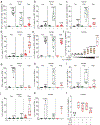
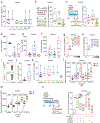
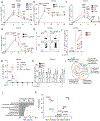

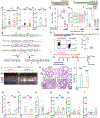
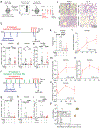
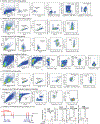


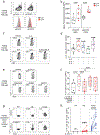


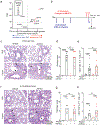
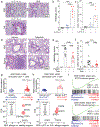
Comment in
-
JAKing up IL-9 expression in TH9 cells.Nat Immunol. 2023 Jun;24(6):891-892. doi: 10.1038/s41590-023-01509-x. Nat Immunol. 2023. PMID: 37142770 No abstract available.
References
-
- Immunology, A. A. o. A. A. a. Allergy Statistics, <https://www.aaaai.org/About/News/For-Media/Allergy-Statistics> (2021).
Methods-only References
References
Publication types
MeSH terms
Substances
Grants and funding
LinkOut - more resources
Full Text Sources
Medical
Molecular Biology Databases
Research Materials
Miscellaneous

